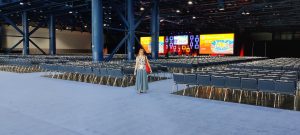Within the framework of the PRG1198 research project Dr Signe Vahur with her team (Dr Anu Teearu, Dr Rünno Lõhmus, Martin Leissoo, Dr Alexey Treshchalov, Dr Janis Lungevics, Dr Georg Arju, Dr Hilkka Hiiop) has published a new article titled “Characterisation of laser-ablated craters of different painting materials and evaluation with modified LA-APCI-MS system” in the Journal of Talanta. The article is available here: https://doi.org/10.1016/j.talanta.2025.127856
The article presents preliminary results obtained by investigating the pulsed 355 nm Nd:YAG laser’s impact on specific painting materials (oil and acrylic paints and varnish) surfaces by characterising the area and volume of laser-ablated craters (measured with an optical microscope and 3D profilometer) obtained with different laser energies and the number of pulses at 90°, 70°, and 45° incidence angles and evaluating intensity of corresponding MS signals obtained with APCI-MS.
















